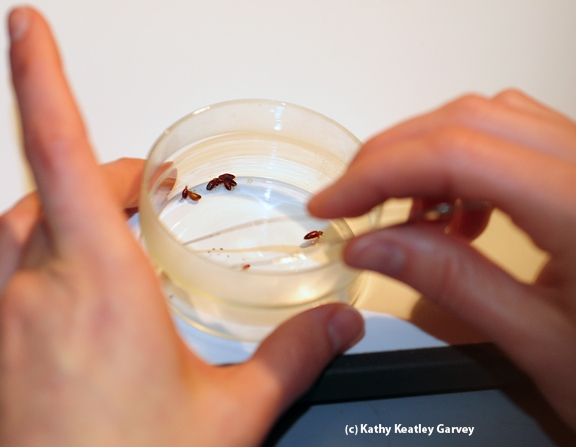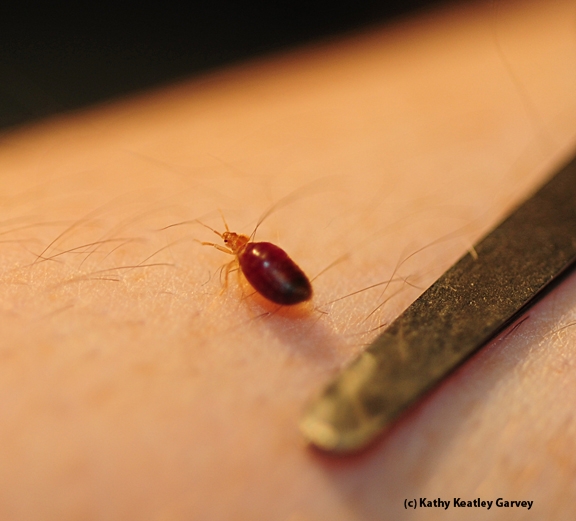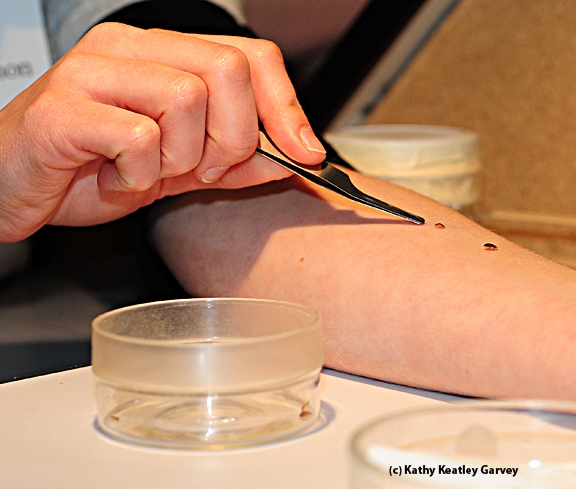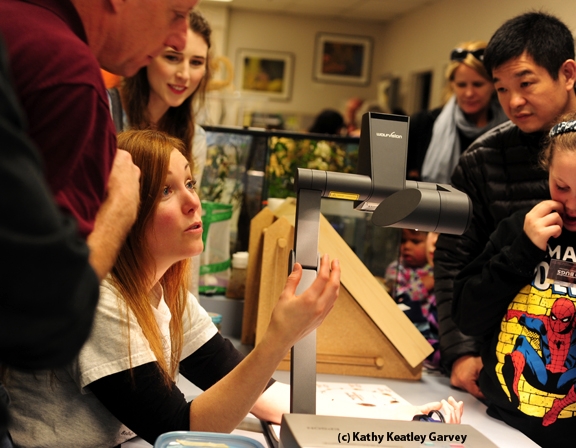Most of us remember the old nursery rhyme, "Good night, sleep tight, and don't let the bed bugs bite," and vow to do everything we can to avoid any blood-letting.
Whether we call them "blood suckers," "menace in the mattress," or "human parasites," it's not cool to be bitten by bed bugs.
"Bed bug biting," however, is not part of their job descriptions.
The crowd watched in awe as the reddish-brown blood suckers turned from flat to bulging. The insects, Cimex lectularius, are "visually adorable," Wishon said, noting that they are pests but they don't spread diseases. She keeps two colonies in Briggs Hall for research purposes.
Several visitors told of their personal experiences with bed bugs--in their hotels and homes, and in their bedding and baggage.
Wishon made sure no one took any home.
For more information on bed bugs, check out the Entomological Society of America (ESA) website on bed bug resources. ESA includes the UC Statewide Integrated Pest Management Program (UC IPM). Another good source is the relatively new University of Florida bed bug site.
"Despite their name, bed bugs can infest areas other than beds," according to the University of Florida website. "They tend to locate in cracks and crevices, such as behinds baseboards, wall outlets, and wallpaper; between bed joints, slats, and dresser drawers; and along mattress seams and in linens and clothes. Most bed bug infestations occur in the home, along with hotels, dormitories, and cruise ships. Bed bugs easily transfer from one site to another through infested belongings like clothes, suitcases, second-hand furniture, beds, and bedding."
Attached Images:

Forceps held by Danielle Wishon zero in on a bed bug to be fed. (Photo by Kathy Keatley Garvey)

Bed bug scurries away after taking a blood meal. (Photo by Kathy Keatley Garvey)

Two bed bugs on Danielle Wishon's arm. (Photo by Kathy Keatley Garvey)

Danielle Wishon (foreground at left) answers questions. (Photo by Kathy Keatley Garvey)